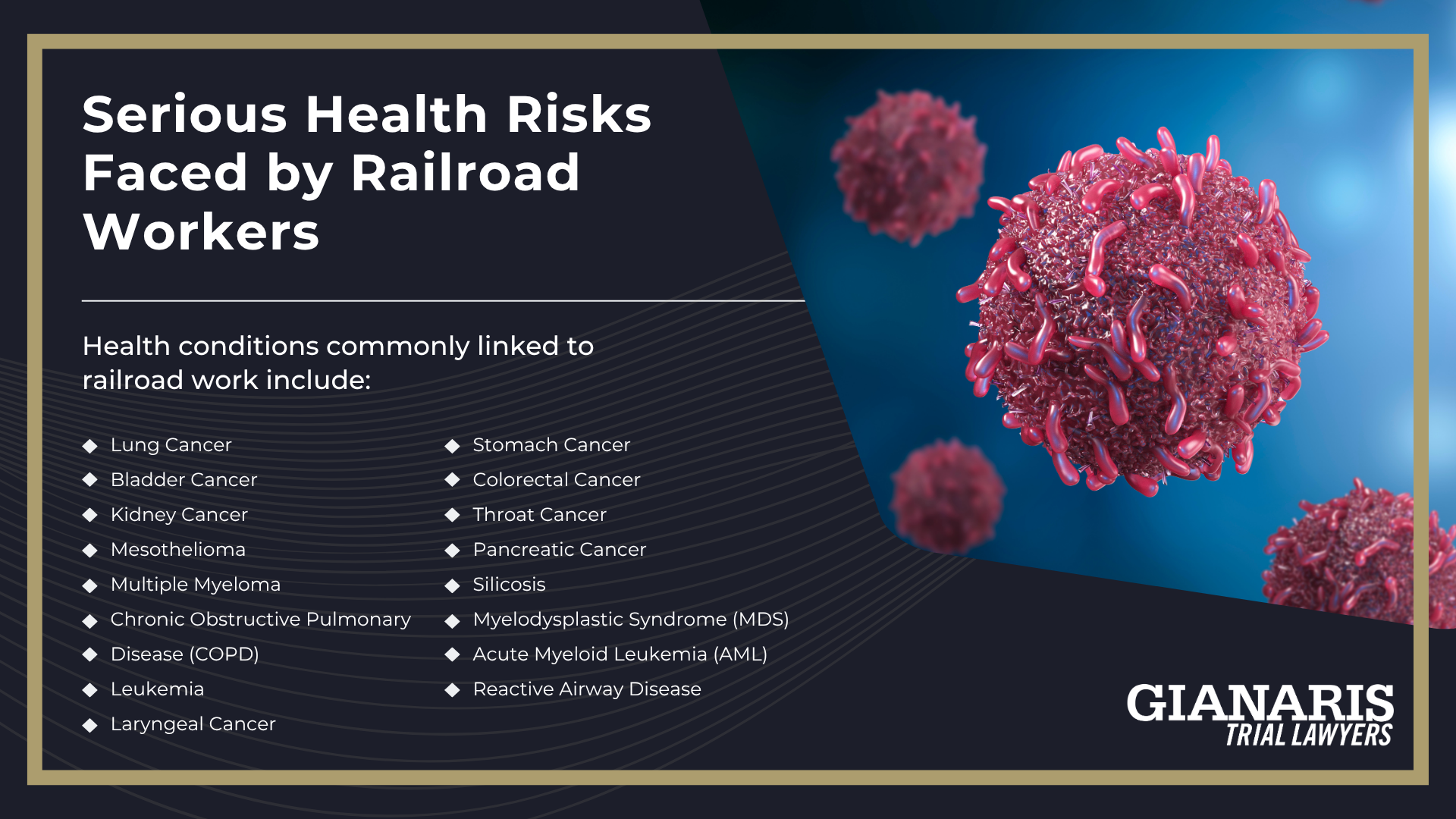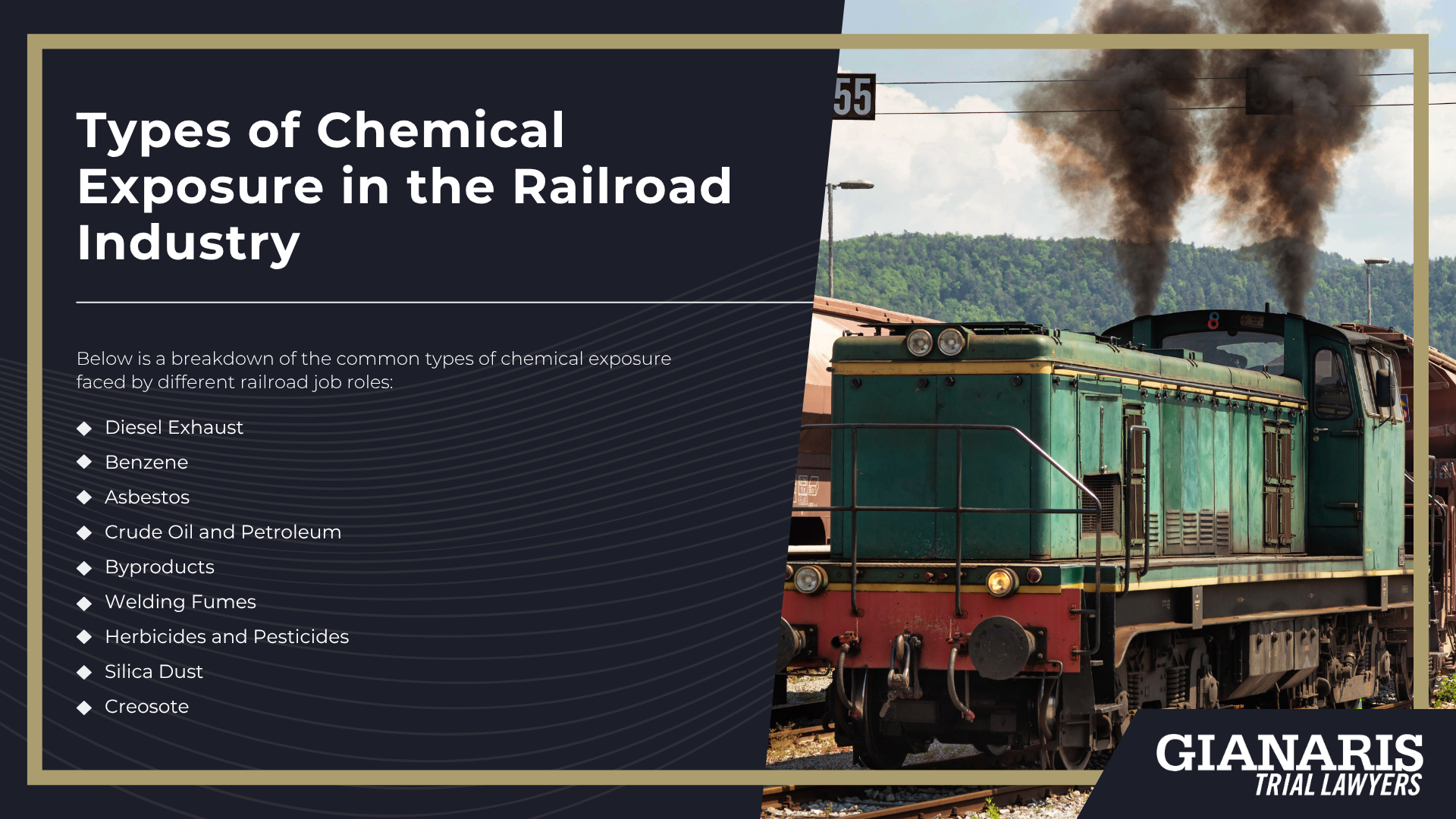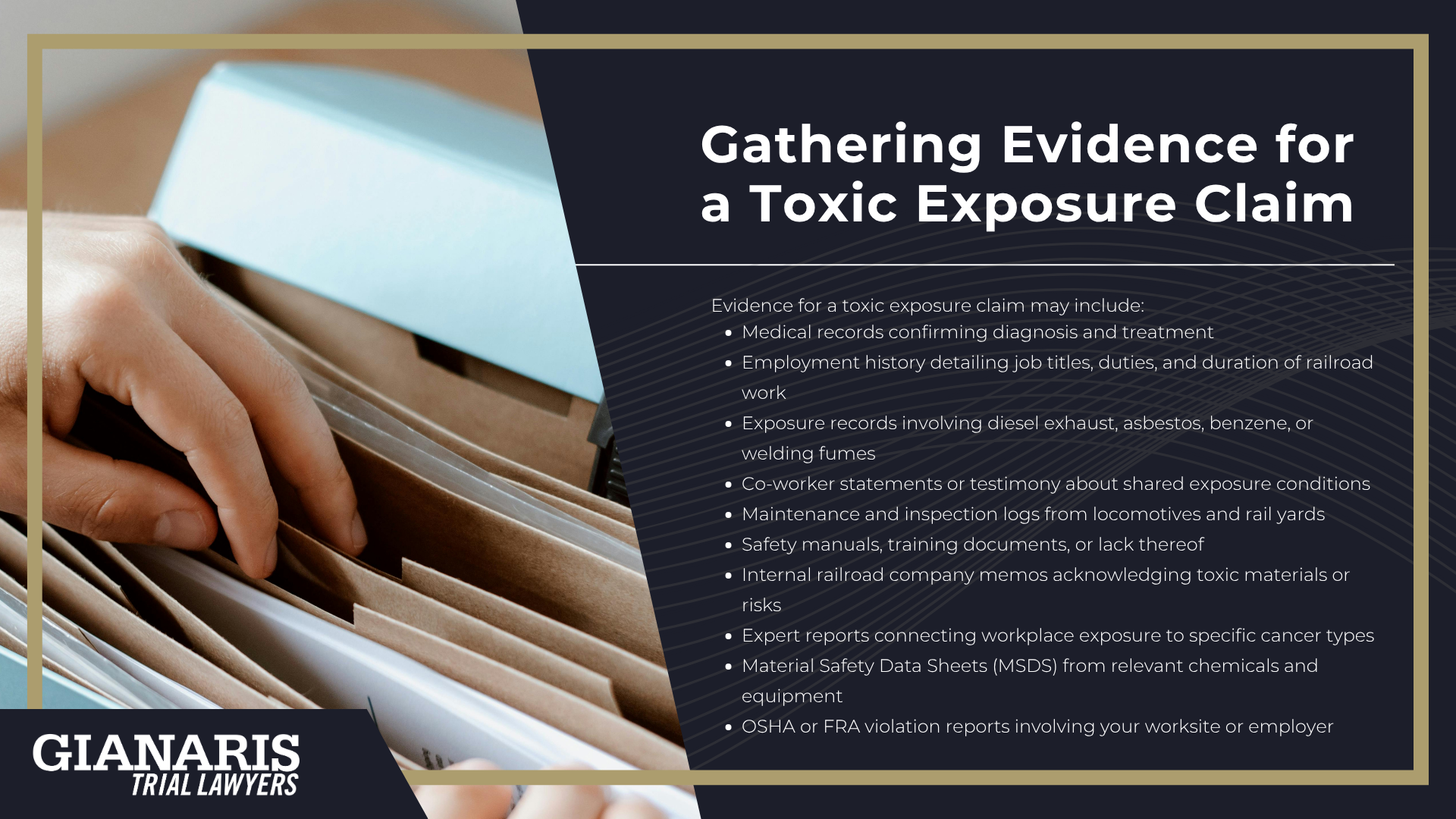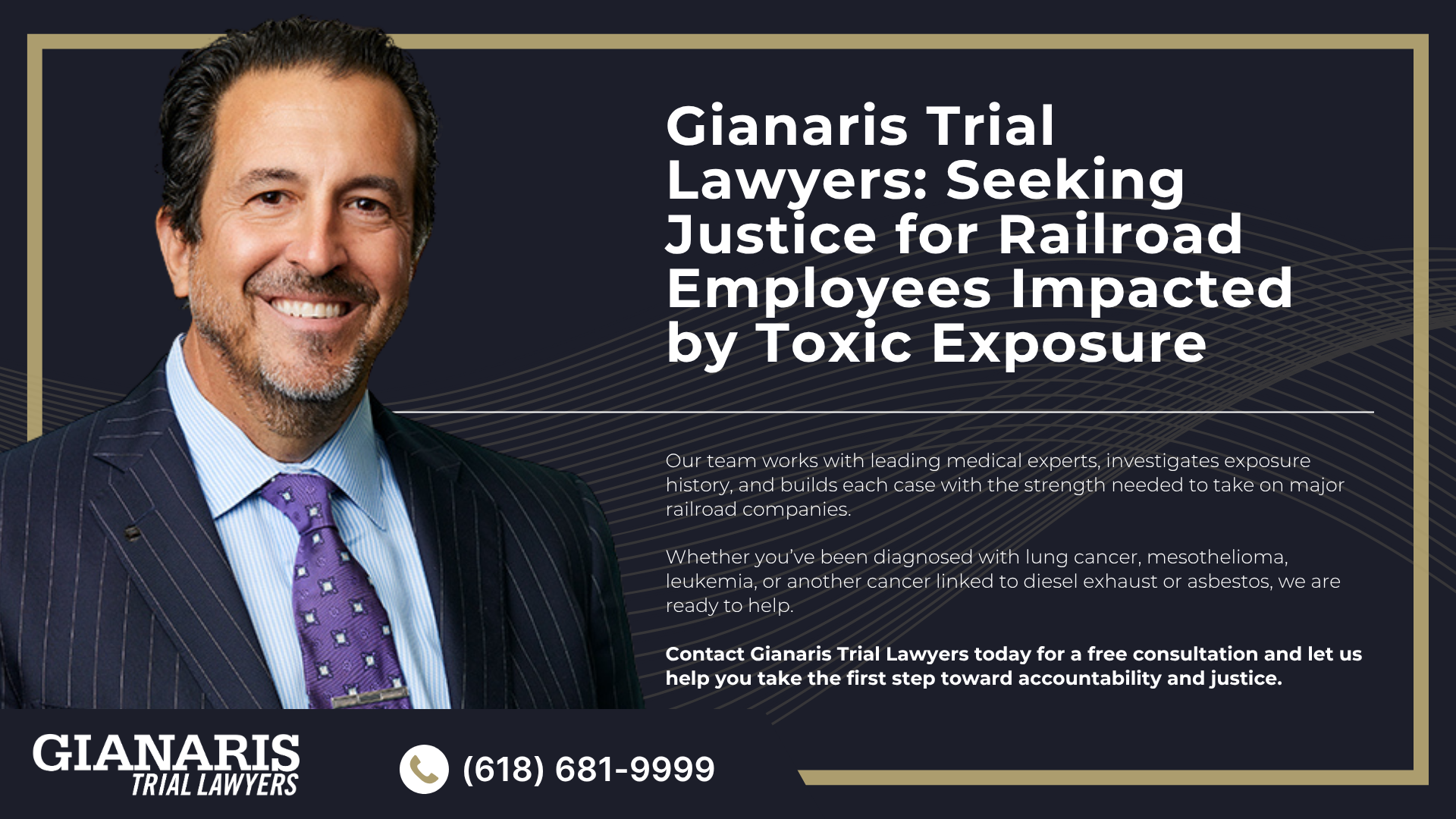Railroad workers face a heightened risk of developing life-threatening health conditions due to prolonged exposure to carcinogenic substances like diesel exhaust, asbestos, benzene, and welding fumes.
Despite the well-documented dangers associated with these toxic chemicals, many railroad employers failed to implement adequate occupational safety measures, leaving workers vulnerable to contamination over years of service.
The lack of proper ventilation, protective equipment, and routine safety training meant that engineers, conductors, machinists, and maintenance crews were regularly exposed to hazardous materials without sufficient warning.
Unlike short-term exposure, prolonged contact with diesel exhaust and asbestos fibers can significantly affect railroad workers’ health, often leading to irreversible damage.
The consequences are severe—not only affecting physical health but also disrupting families and financial stability.
Workers diagnosed with cancer or chronic lung diseases face mounting medical bills, long-term disability, and the emotional strain of battling a preventable illness.
For many, the diagnosis comes years after the initial exposure, complicating their ability to trace the source and hold railroad employers accountable.

Health conditions commonly linked to railroad work include:
- Lung Cancer
- Bladder Cancer
- Kidney Cancer
- Mesothelioma
- Multiple Myeloma
- Chronic Obstructive Pulmonary Disease (COPD)
- Leukemia
- Laryngeal Cancer
- Stomach Cancer
- Colorectal Cancer
- Throat Cancer
- Pancreatic Cancer
- Silicosis
- Myelodysplastic Syndrome (MDS)
- Acute Myeloid Leukemia (AML)
- Reactive Airway Disease
These serious conditions not only devastate the lives of railroad workers but also create lasting impacts for their families.
Legal action may be the only path forward to secure compensation and hold negligent railroad companies accountable for their disregard for worker safety.
If you or a loved one have suffered from any of the above health conditions after working on the railroad, you may be eligible to file a legal claim and seek compensation.
Contact the Gianaris Trial Lawyers today for a free consultation, or use the chat feature on this page to find out if you qualify for a Railroad Workers Cancer Lawsuit instantly.
Scientific Studies Analyzing Prolonged Exposure to Toxic Substances in Railroad Work
Extensive research has established a strong link between prolonged exposure to toxic substances in railroad environments and increased cancer risk among workers.
Studies have particularly focused on the effects of diesel exhaust, creosote-treated railroad ties, and other hazardous materials commonly encountered in rail yards and during maintenance operations.
Research findings have helped regulators, railroad employers, and legal teams better understand the need for occupational safety measures and have significant implications for railroad cancer claims.
Key studies and investigations include:
- Cancer Risk and Diesel Exhaust Exposure Among Railroad Workers (2022): This study utilized EPA risk assessment methodologies to quantify cancer risks from diesel exhaust inhalation in railroad work environments. It concluded that such occupational exposure leads to a significant and measurable increase in cancer risk, particularly lung cancer, among railroad workers.
- Lung Cancer in Railroad Workers Exposed to Diesel Exhaust (1980): An analysis of over 35 studies revealed that workers exposed to diesel exhaust had a 20–50% higher risk of developing lung cancer compared to unexposed individuals. This research highlighted the carcinogenic potential of diesel fumes in occupational settings.
- Tracking Harm: Health and Environmental Impacts of Rail Yards (2012): This report examined the environmental and health impacts of rail yards, noting that emissions from diesel-powered equipment contribute to elevated cancer risks in nearby communities and among rail yard workers.
- Creosote Contamination in Houston’s Fifth Ward: Investigations into a former rail yard revealed that prolonged exposure to creosote, used in treating railroad ties, led to soil and groundwater contamination. Residents and workers in the area have experienced higher incidences of certain cancers, prompting health risk assessments and legal actions.
- Lung Cancer in Railroad Workers Exposed to Diesel Exhaust Fumes: A comprehensive study by Harvard University assessed lung cancer mortality among 54,973 U.S. railroad workers between 1959 and 1996. The research found a significant association between diesel exhaust exposure and increased lung cancer risk, particularly among workers in roles with higher exposure levels.
- Occupational Exposure to Diesel Exhaust and Lung Cancer: A Meta-Analysis: A meta-analysis published in the American Journal of Public Health reviewed multiple studies and concluded that occupational exposure to diesel exhaust significantly increases the risk of lung cancer among workers, including those in the railroad industry.








